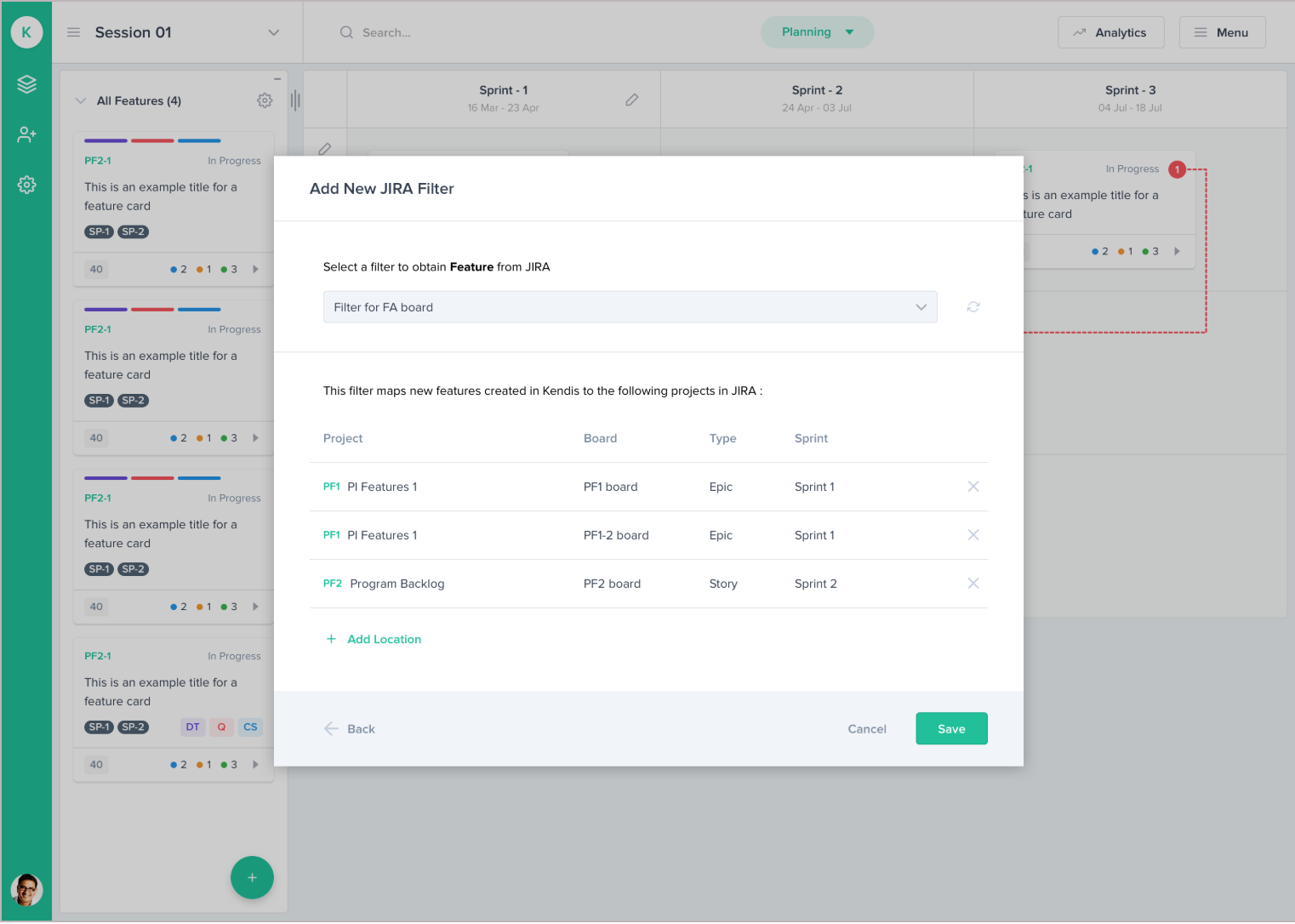What is a Solution Train?
The Solution Train is when multiple Agile Release Trains band together to create large and complex solutions. In the Scaled Agile Framework, scaling agile teams may consist of hundreds of practitioners to develop a solution. These Agile Release Trains are lead by multiple Release Train Engineers.
Executing a feat of this magnitude requires extensive planning and coordination. Managing this in real time without any visualization can complicate the entire process. There is a dire need of thorough analysis, design, and architecture. This requires constant transparency, collaboration, and alignment to successfully develop the solution.
Problems
When planning the Solution Train, some of the commonly faced problems by the Portfolio Teams of the Program Management Office (PMO) are:
- Failing to do real time planning and prioritizing higher level features. These features include capabilities, epics, and dependencies of the product roadmap.
- Difficulty in comparing the planned features with the real time situation of the Agile Release Train.
- Inability to align the scope of the upcoming Program Increment and on-going releases.
- Struggling to manage the dependencies among Portfolio Work Items and handling risks.
- No transparent view of impediments tracking.
- No statistics to predict the on-going sprints’ progress.
These problems are a result of a lack of visibility into the progress. These teams are unaware of a data-driven tool that would give them real-time visibility across the business organization. It becomes a mammoth task for the Portfolio Management to see the progress of the Program Increment.
How are these problems overcome? Just another brick in the Wall
Teams resort to tedious, physical and manual work by using sticky notes on a whiteboard to recreate the scenario by listing their issues.

Agile Teams that are using Jira Software, export all of their issues to an Excel sheet and organize them in such a way that they are legible to the Release or Solution Train Engineer. This appears to be a much-advanced approach to this problem, nevertheless, this is also a time consuming and a dull activity.

These approaches fail because as soon agile teams update the status of these issues in their project management tool that they using or putting sticky notes on their whiteboard, the newly listed issues replace the older ones making the list obsolete.
The REAL Solution
With Kendis, we present to you the complete solution for these problems. Not only does Kendis save time and effort but it lets you ditch the spreadsheets and the sticky notes to present all of your progress of the Solution Train in one place.
Planning and prioritizing Solution Train Features and Capabilities
In Kendis, a Solution Train Engineer can use both bottom-up or top-down approach to create a board. This helps them define the train’s capabilities, strategic themes and devise a multi-level plan.
In Pre- and Post-PI sessions, you can create high-level features on the Kendis board. If you have applied your Jira Configurations, these capabilities or even work items can be synced back to Jira in real-time.
Kendis aligns the work of multiple cross functional teams and keeps all the teams in sync. You have insight into the epics of the teams which can be easily accessed to view their respective user stories. The Kendis board is flexible enough to create even on a saved Jira Filter query.

As Gartner* states, “PMOs must make a cultural shift from ‘the more detailed information the better’ to providing just enough of the right data to leadership about ongoing activities…Executives and leaders want to do one or two things with PPM metrics and data—make a decision or take an action.”
Comparing the planned contents with the real time progress
Once the feature list is finalized, you can save a board that secures the history of the features which are planned for a release. You can then proceed to the next step of tracking. A new board is created for the tracking stage of your solution train where all planned features are copied. On this board real-time changes are possible. This helps the stakeholders to compare planned goals vs achieved features.

These board stages enhance real-time visibility into your planned work. This helps you manage the scope across all the teams and projects.
Stakeholders are not left in the dark. They can download status and release reports that enlightens them on the progress of the product.
Struggling to manage the dependencies
When implementing the Scaled Agile Framework, it is important to understand the essence of transparency. Transparency lets you realize your dependencies.
Just like a physical board, i.e a whiteboard, where teams use a thread to show dependencies, you can define dependency types in Kendis. Tracking is simplified in Pre- and Post- PI planning sessions where these dependencies can be discussed. Agile teams and Release Train Engineers remain on the same page and also get notified if their dependency has been changed. If Jira is configured with Kendis, this dependency relation can be synced back to the Jira items.
Transparent view of tracking impediments
There is an enormous emphasis on transparency in the Scaled Agile Framework and having clarity in the work you do.
After a successful planning session, it is important to clear any ambiguities from the agile teams as soon as it arises. Release Train Engineers do that by discussing in the Scrum of Scrums sessions. In Kendis you can create an impediment section on the same board and track them in the syncing sessions. These issues are configurable and can be sync back to Jira.
Predict On-going sprints progress and Agile Team Capacity
Using AI-based analytics, Kendis can smartly predict the agile team velocity of each team. This makes the Release Train Engineers and stakeholders aware of making conscious decisions. It provides insight into the features at risk and the completion rate. This completion rate is based on obtaining the previous data of the team velocity and current load on the teams.
Conclusion
In Kendis, we keep transparency as our top priority. The highly customizable board in Kendis helps Agile Release Trains truly visualize the teams progress every step of the way. It is truly the one place for managing and viewing all of what is happening in your Solution Train.
Scaling and creating a taxonomy of the agile teams is a lot of work. But with the determination to succeed, teams can conquer any challenges that may prevail.
An article of Agile at scale published in the Harvard Business Review states that the key to success is understanding the big-band transition. It may appear overwhelming but it is better to roll out agile in steps. And Kendis is there to help you make this transition as smoothly as possible.









